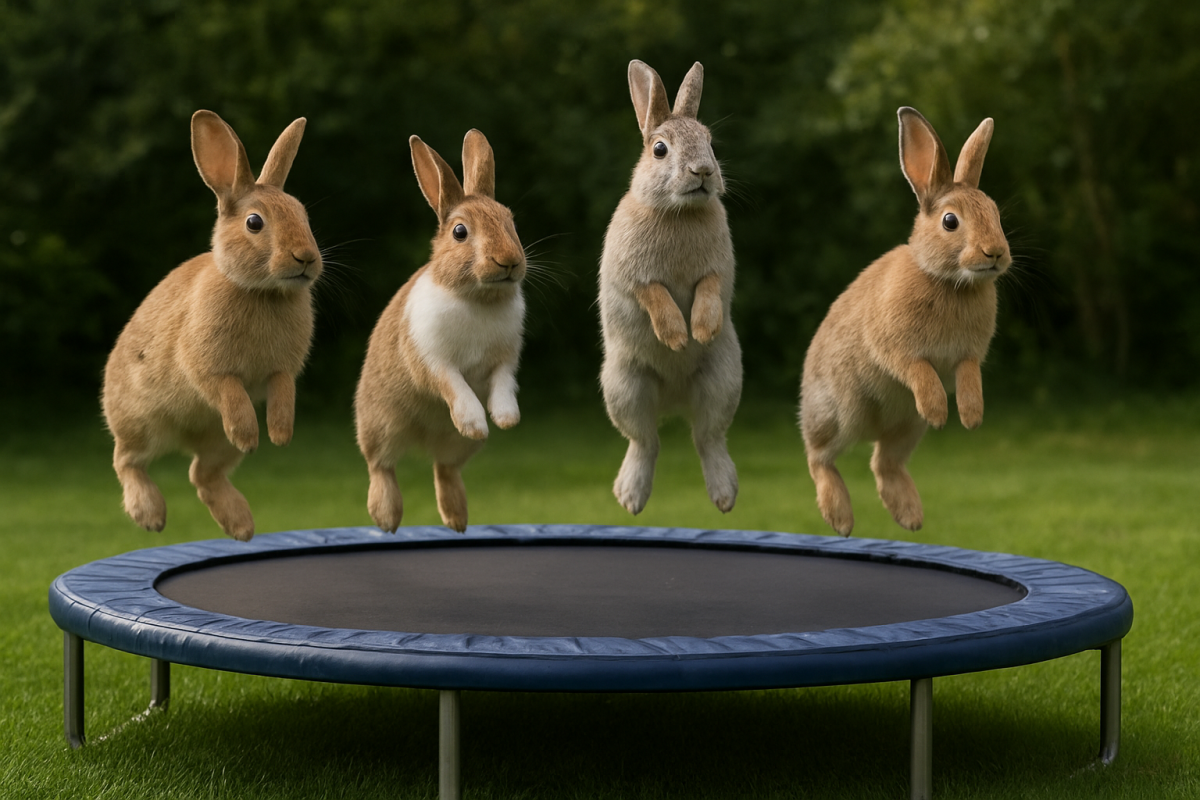
AI-generated bunnies jump atop a deepfake trampoline. A viral video of hyperrealistic bunnies on a trampoline circulating TikTok raised concerns about the realism of AI-generated videos. People are worried how easily they could be fooled by AI. Photo generated by ChatGPT.
Perception is reality. Everything we can see, hear and experience allows us to define what’s real. But what happens when reality can be fabricated, and there’s no way to tell?
In the era of Artificial Intelligence (AI), it seems perception is reality. Now, AI “deepfakes”—realistic photos or videos made with AI to create situations that never actually happened—cause us to doubt everything we see online.
Deepfake technology has found its way into Shorecrest Upper School with Snapchat’s new Imagine Lens, an AI text-to-image generator that allows users to input prompts and create deepfake imagery.
With the rapid rise of such easily accessible deepfake technology, Assistant Head of School and In-House Counsel Kristine Grant held an Upper School Assembly to inform students of the legal implications of creating and sharing AI deepfakes on Oct. 2.
People, especially students, must refrain from using this technology without a deeper understanding of the impact these photos and videos can have. We also have to recognize that everything we see online may just be AI-generated, so always proceed with caution.
What makes this media so dangerous is AI’s ability to fabricate images that seem very real. Long gone are the days of six-fingered, one-armed digital creations, clearly outed as AI by each noticeable mistake.
Shortly after Imagine Lens’ debut in Sept. 2025, Shorecrest students quickly began fabricating harmless depictions of people dressed in funny outfits or doing silly poses.
Seemingly overnight, I began to see friends laughing at the endless possibilities of this new technology. With one click of a button, they could fill an empty hall with people. The dangerous part, however, is the ability to make those people do whatever they want.
Deepfake images of people participating in illegal activities or making choices they wouldn’t have made can have serious moral and legal implications, and Snapchat has increased the dangers of this technology by giving everyone this ability right at their fingertips.
Not only does the creation of these images violate Shorecrest’s Responsible Use Policy, but the state of Florida imposed significant legal consequences to protect people from AI. Florida Statute 836.13 deemed it a third-degree felony to “willfully and maliciously publish, post, or share an altered sexual depiction of an identifiable person without consent.”
Students must also keep in mind that these consequences can’t be avoided with the defense that the deepfake imagery was a “joke” and the perpetrators were “just kidding.”
Even if an AI deepfake starts as a joke between friends, students can never be sure the image will stay between people who find it funny. It’s not worth losing a spot at Shorecrest, getting sued or even serving jailtime over a deepfake image.
For Shorecrest students navigating such a complex digital landscape, the capabilities of AI to create hyper-realistic media pose serious threats to online safety. When what we see can no longer be believed, these developments undermine trust in all digital videos and audios.
People have long doubted what they read online, but they could always trust what they saw with their own two eyes. When even our own senses betray us, we must fight back against the machine.
“I think the main safety concern is that it can make such realistic images, so it may be misleading or violate someone’s privacy,” senior and Honor Council President Nicholas Canizares said.
Deepfakes can land you in deep water when what starts as a friendly joke has serious consequences. With deepfakes giving everyone the ability to change reality – the power to manipulate people and ruin reputations – it’s best to just steer clear and stick with what’s real.